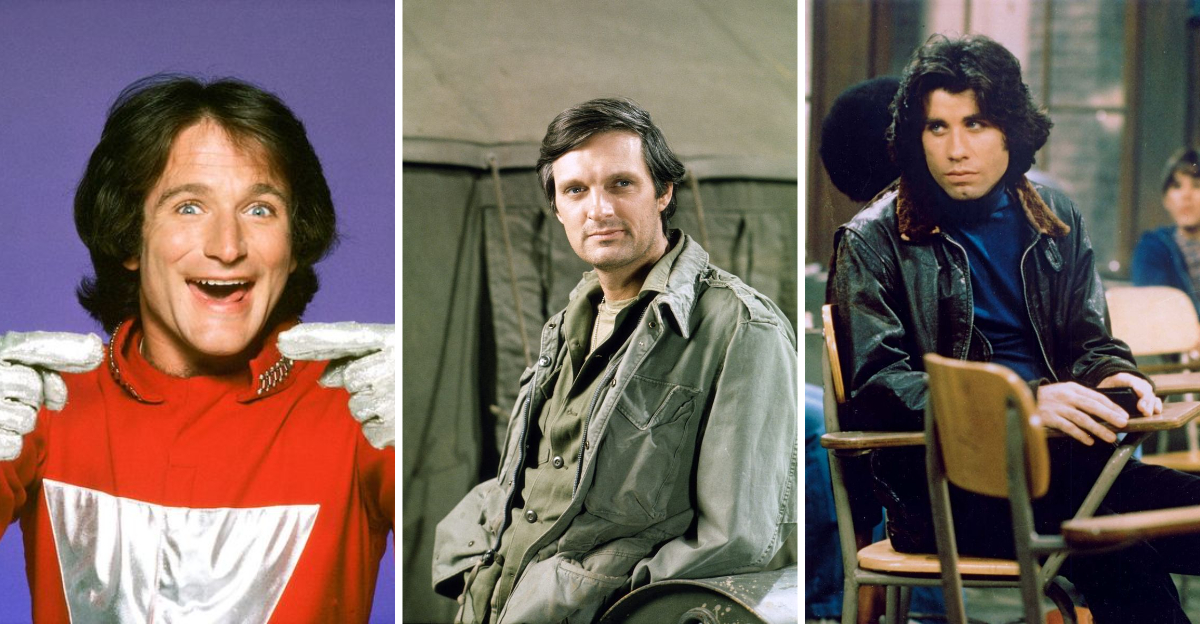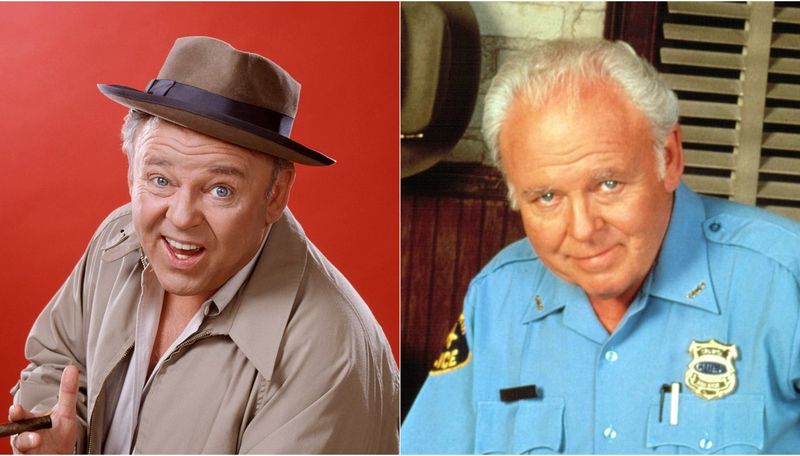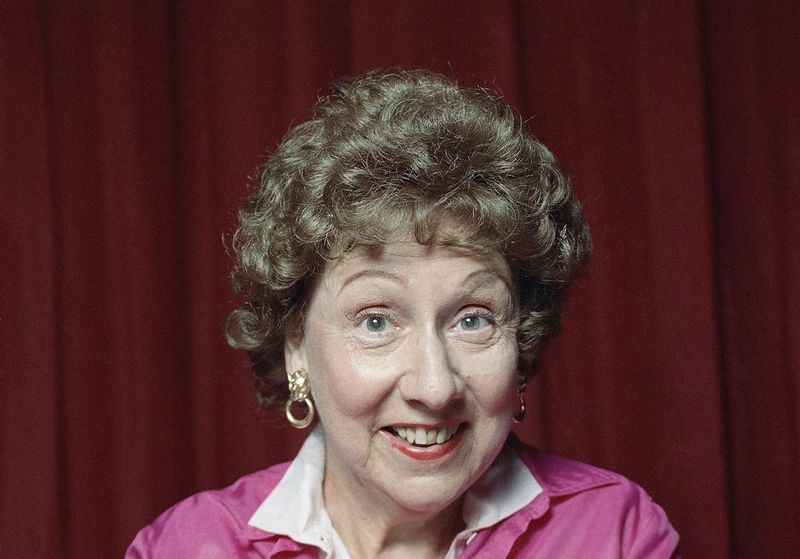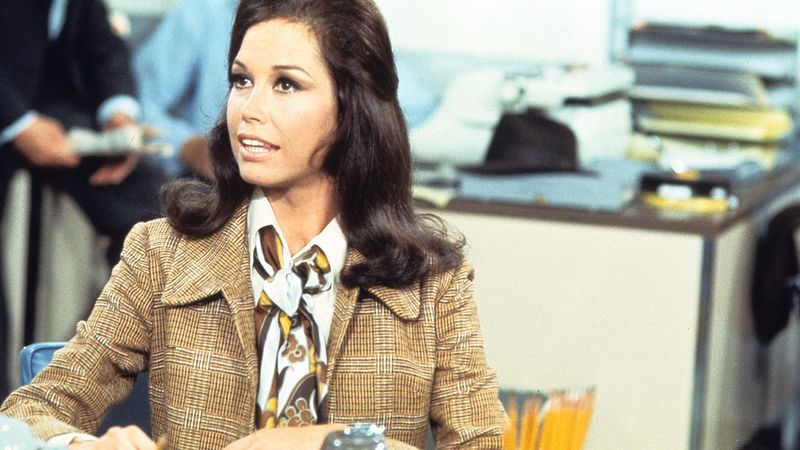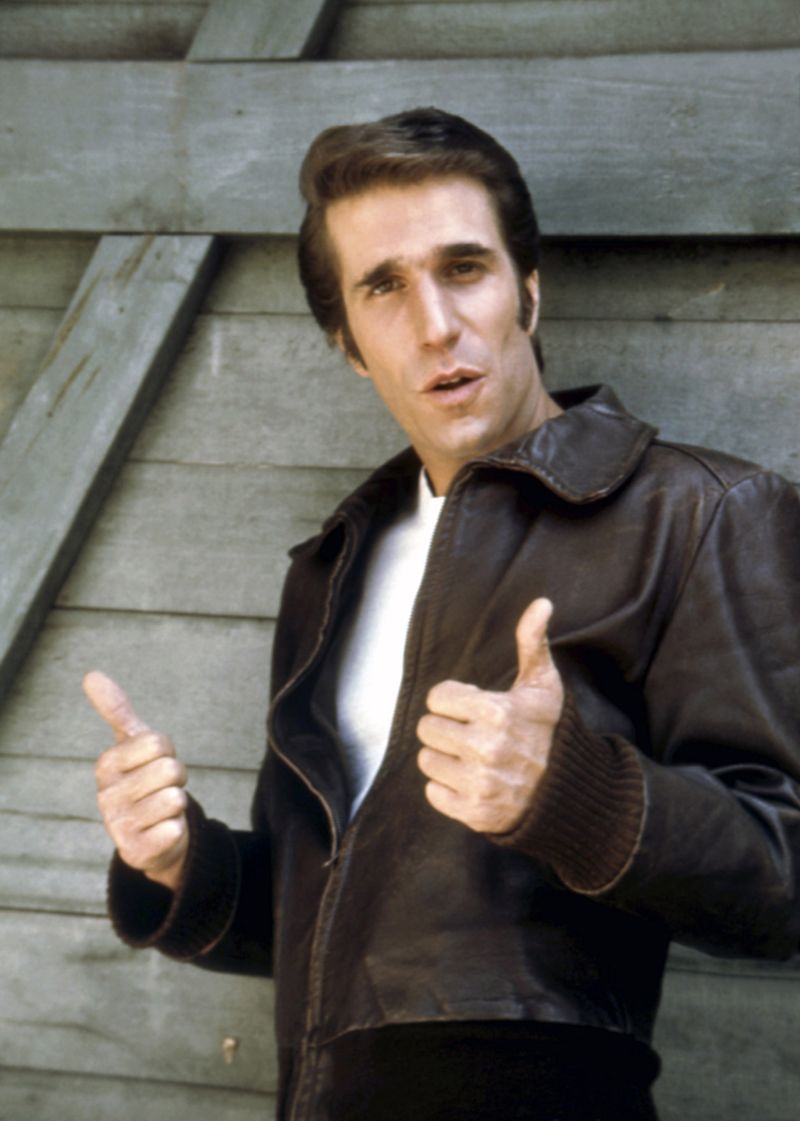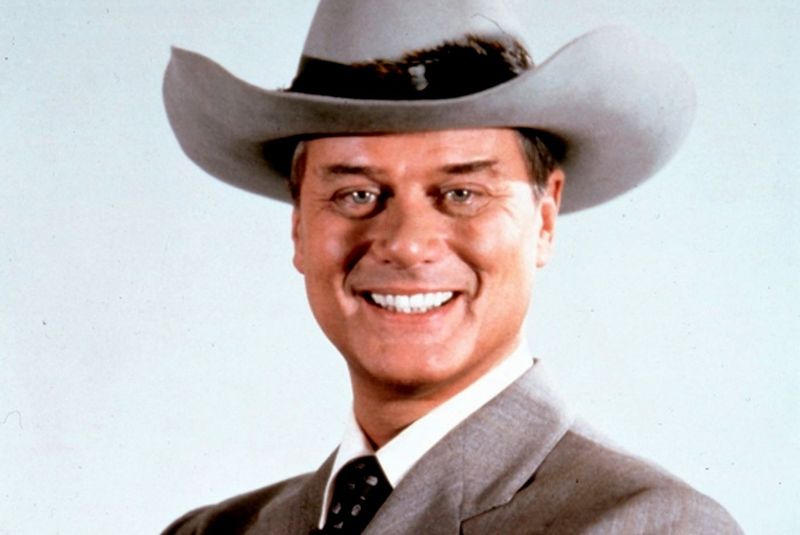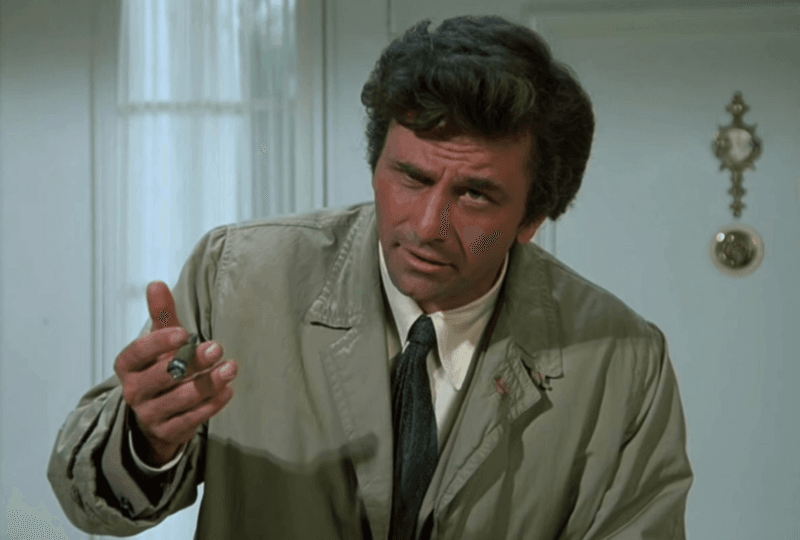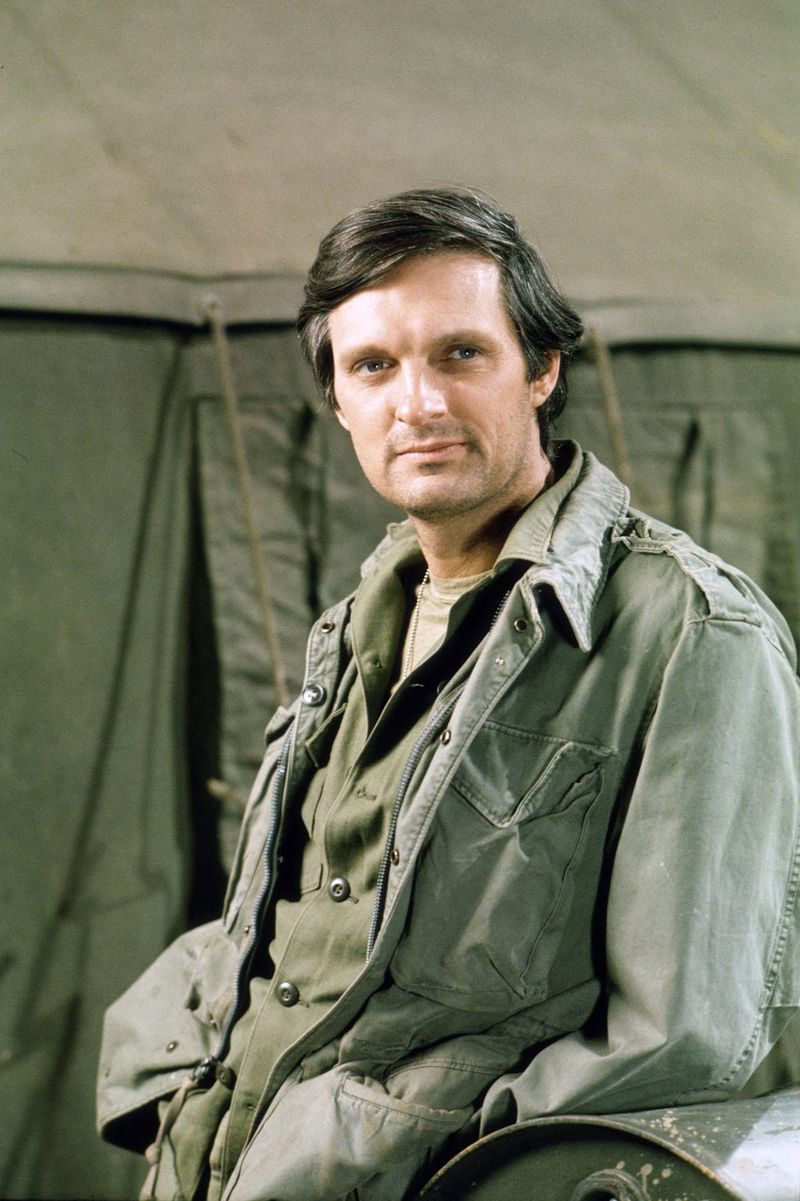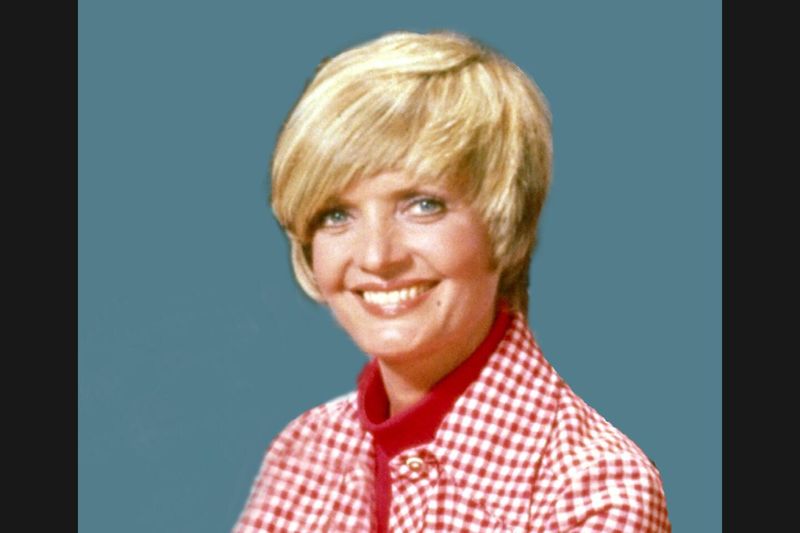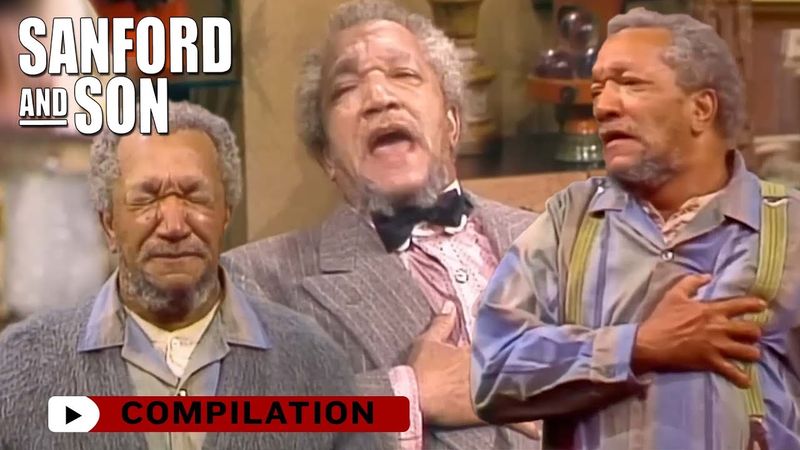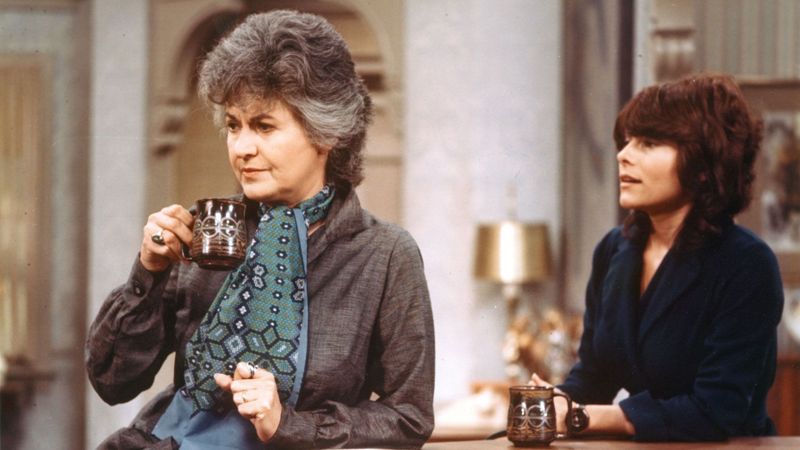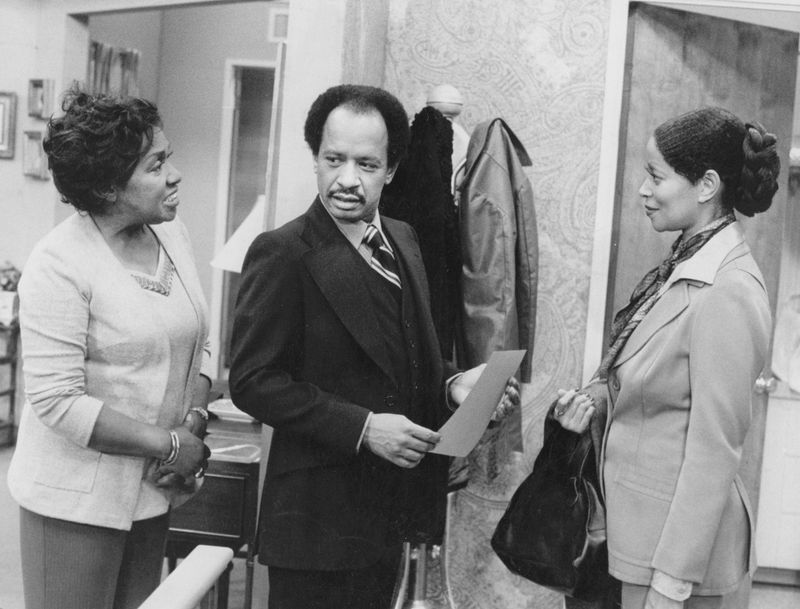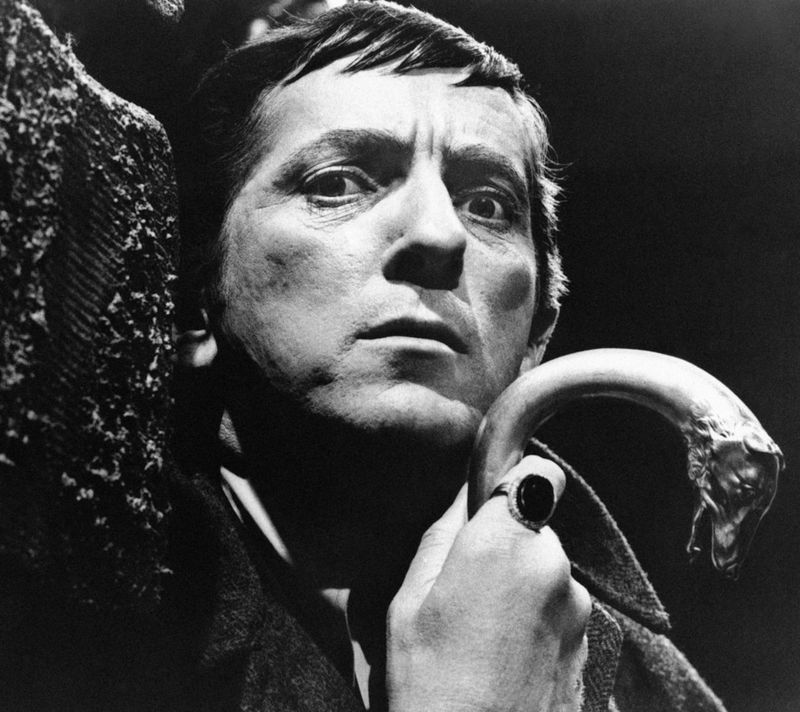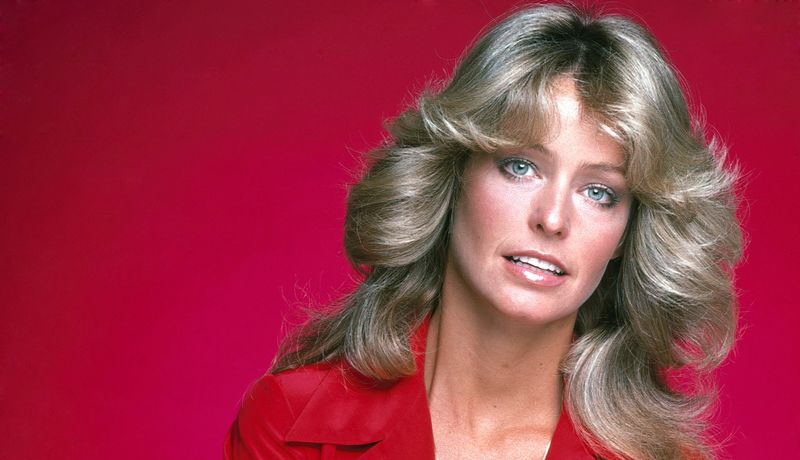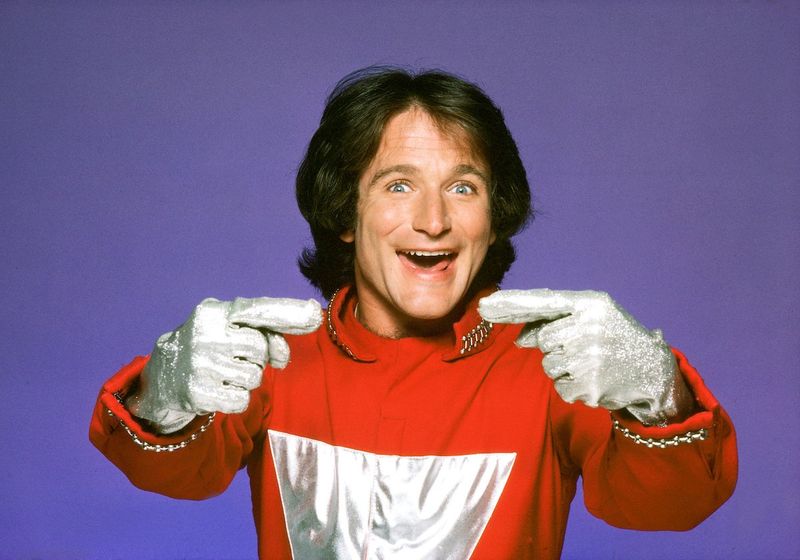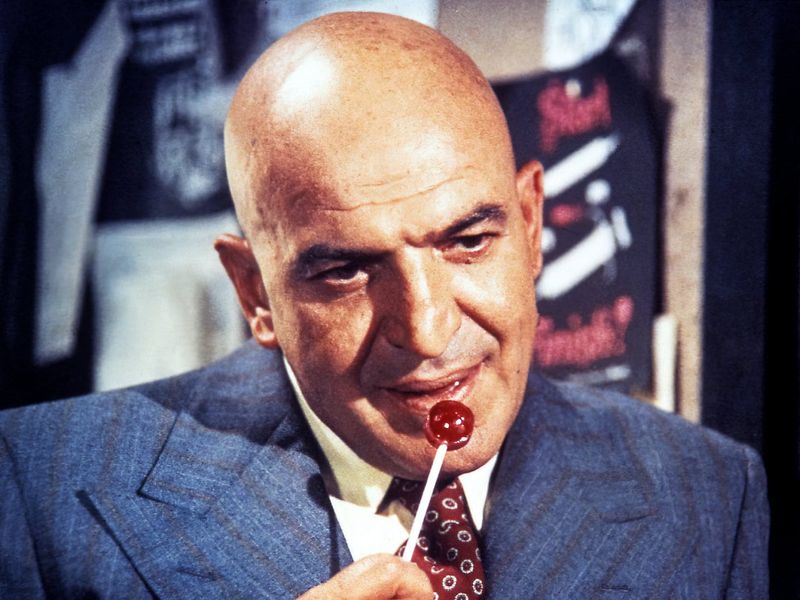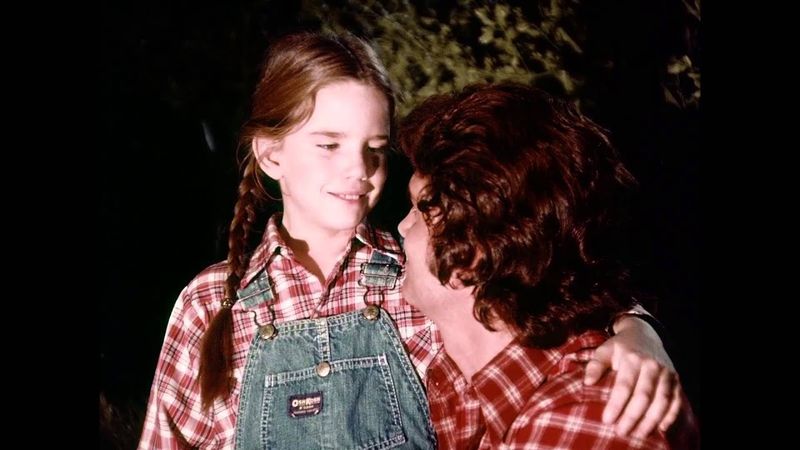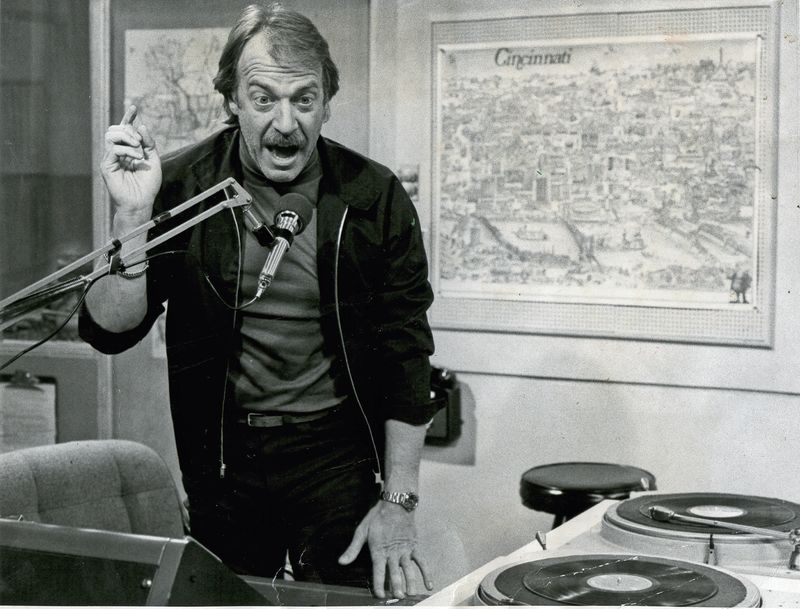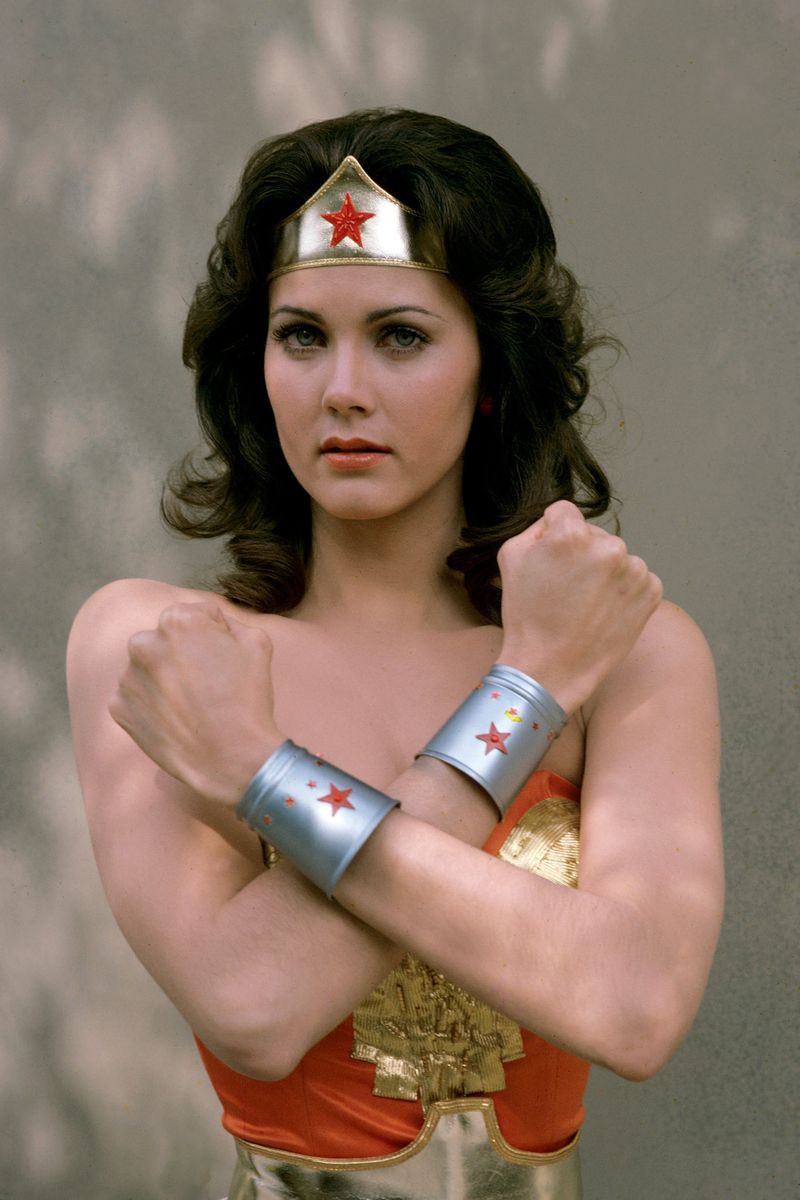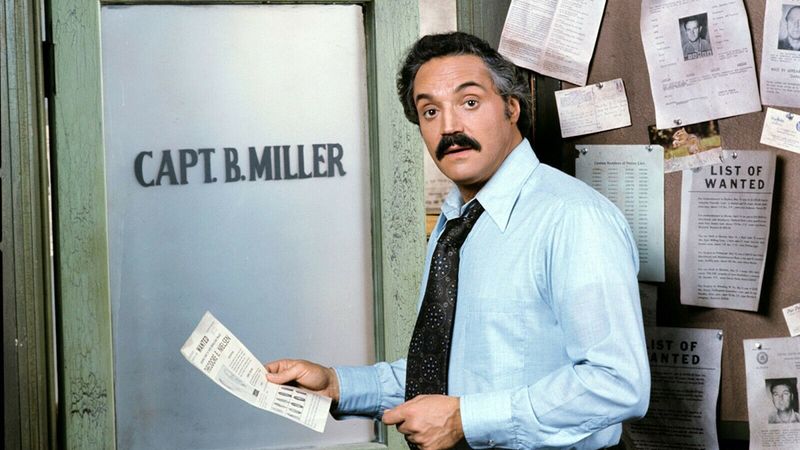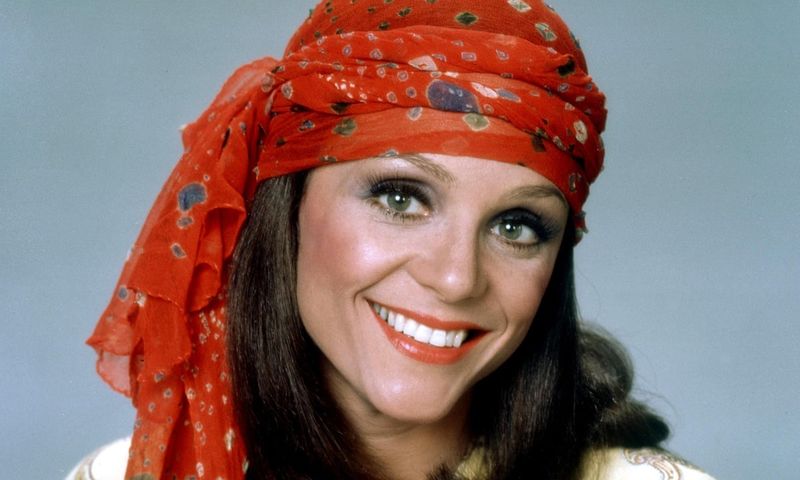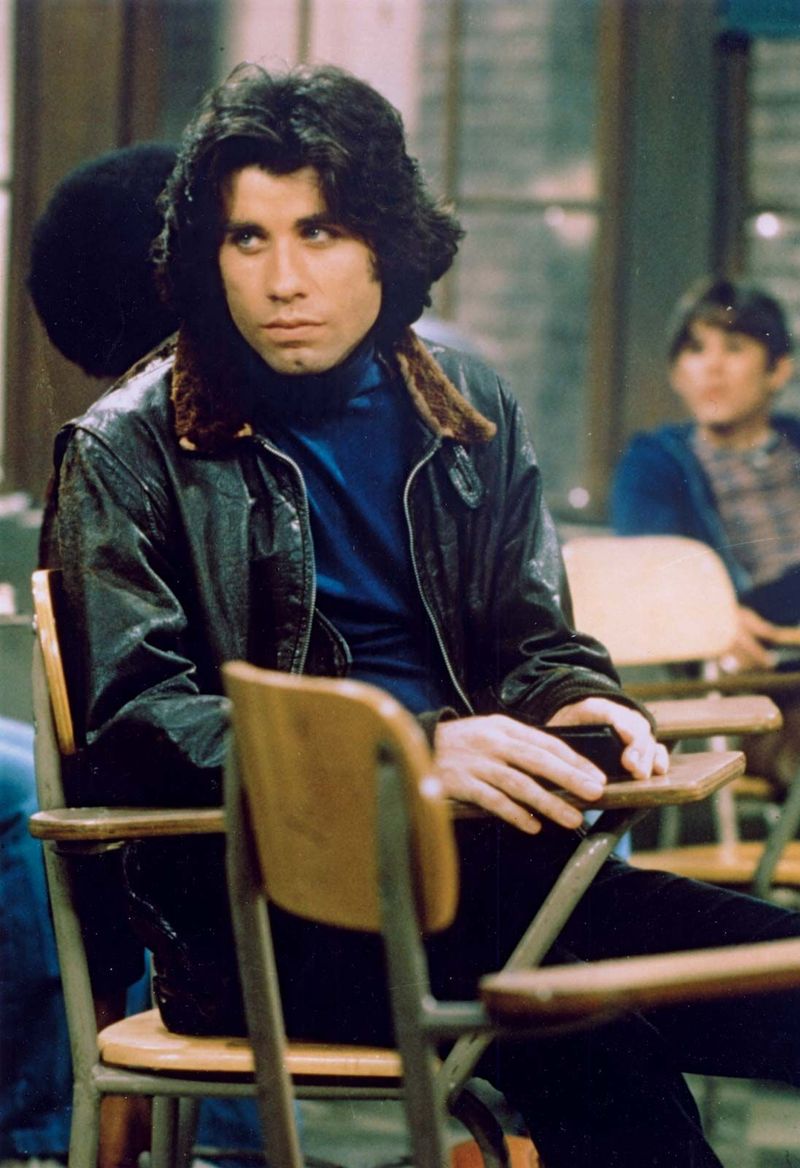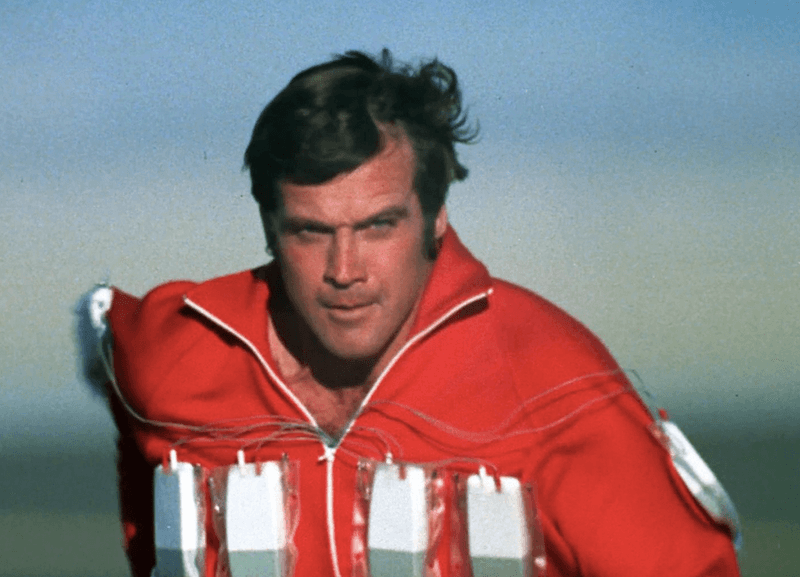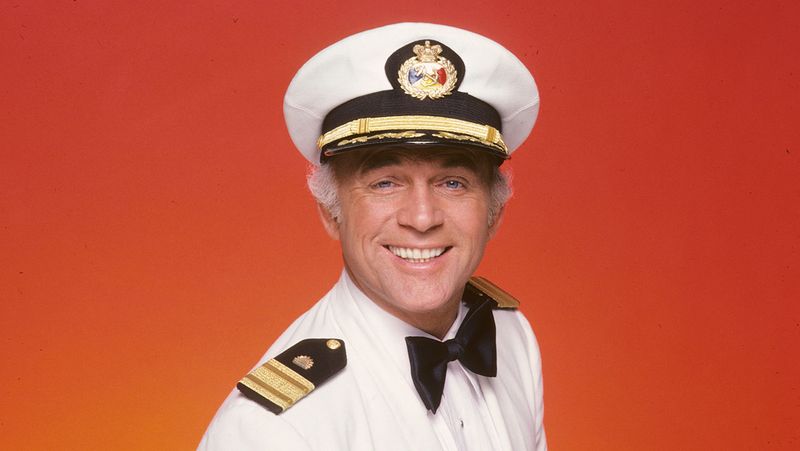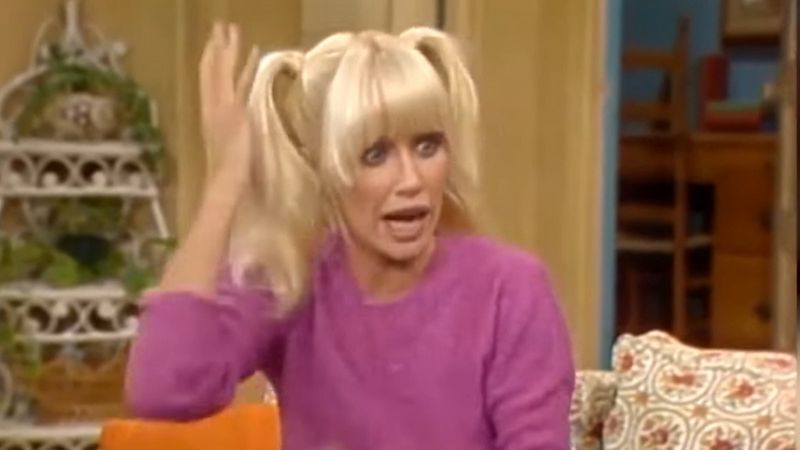The 1970s brought us some of the most unforgettable characters in television history. From groundbreaking sitcoms that tackled social issues to action-packed dramas that kept us on the edge of our seats, this decade changed how we watched TV forever. These 24 legendary performers didn’t just entertain us – they became part of our lives, sparking conversations around dinner tables and creating catchphrases we still quote today.
1. Carroll O’Connor as Archie Bunker
Bringing bigotry to the family dinner table sounds like a terrible idea, but O’Connor transformed Archie into television’s most controversial yet compelling character. His explosive arguments with son-in-law “Meathead” tackled racism, politics, and social change when most shows avoided these topics entirely. Behind Archie’s harsh exterior lurked glimpses of a decent man struggling with a changing world. The role earned O’Connor four Emmy Awards and created a character study that television scholars still analyze today. Fun fact: O’Connor was actually a liberal who strongly disagreed with Archie’s views, making his convincing portrayal even more remarkable.
2. Jean Stapleton as Edith Bunker
The heart and soul of the Bunker household, Jean Stapleton’s Edith delivered unexpected wisdom wrapped in a high-pitched voice and perpetual confusion. Her character evolved from Archie’s doormat into a woman with growing independence and surprising moral strength. Stapleton’s comedic timing was impeccable, turning simple lines into memorable moments. Her ability to shift from hilarious misunderstandings to moments of profound emotional depth gave the show its unexpected warmth. When Stapleton decided to leave the show, producers chose to kill off Edith rather than recast her – a testament to how irreplaceable both actress and character had become.
3. Mary Tyler Moore as Mary Richards
Tossing her hat into the Minneapolis air, Mary Richards became an instant symbol of female independence. Moore portrayed a 30-something single career woman focused on professional growth rather than finding a husband – revolutionary for 1970s television. Her character navigated workplace sexism with grace and determination at WJM-TV. The show’s writers brilliantly balanced workplace comedy with meaningful exploration of women’s changing roles. Moore’s impeccable comic timing and emotional depth earned her three Emmy Awards for the role. Her influence extended far beyond entertainment – real-world female journalists often cited Mary Richards as their inspiration for entering the field.
4. Henry Winkler as Arthur “Fonzie” Fonzarelli
Leather jacket, motorcycle, and an unmistakable “Ayyyy!” – Fonzie embodied cool for an entire generation. Originally intended as a minor character, Winkler’s charismatic portrayal quickly made him the breakout star of Happy Days. Fonzie’s character subverted expectations – beneath the tough-guy exterior was a loyal friend with surprising intelligence and emotional depth. His ability to fix anything with a magical pound of his fist became one of TV’s most recognizable running gags. Winkler’s performance was so iconic that the Smithsonian Museum now displays his leather jacket. The character’s popularity was so immense that producers resisted network pressure for “jumping the shark” – the infamous stunt that ironically created a phrase for the moment a show begins declining in quality.
5. Larry Hagman as J.R. Ewing
The villain America loved to hate, Hagman’s portrayal of scheming oil tycoon J.R. Ewing redefined television drama. His conniving business deals and extramarital affairs made him deliciously despicable, yet viewers couldn’t look away. Hagman embraced J.R.’s villainy with infectious glee, delivering cutting remarks with his trademark Texas drawl. His sinister smile and signature cowboy hat became instantly recognizable cultural symbols. The 1980 season finale cliffhanger “Who Shot J.R.?” became a global phenomenon, with 83 million Americans tuning in for the resolution. International betting pools formed, and even the Queen Mother reportedly asked cast members to reveal the shooter’s identity!
6. Peter Falk as Lieutenant Columbo
Disheveled raincoat, perpetually lit cigar, and an old Peugeot convertible – Columbo looked nothing like a brilliant detective. Falk’s genius was making this rumpled, seemingly absent-minded investigator utterly believable as he outmaneuvered murderers who underestimated him. The show’s inverted mystery format was revolutionary – viewers saw the murder committed, then watched Columbo slowly unravel the case. His trademark “Just one more thing…” signaled the moment he would catch killers in a crucial contradiction. Falk won four Emmy Awards for the role he played for 35 years. His glass eye (the result of childhood cancer) added to Columbo’s distinctive, slightly off-kilter appearance that became his signature.
7. Alan Alda as Hawkeye Pierce
Cracking jokes to keep from cracking up, Alda’s portrayal of army surgeon Hawkeye Pierce captured both the madcap humor and profound tragedy of war. His character used wit as armor against the horrors of the Korean War, creating a perfect balance between comedy and drama. Alda wrote and directed many episodes, infusing Hawkeye with his own anti-war sentiments. His performance evolved over 11 seasons, showing how prolonged exposure to combat affected his character’s mental health. M*A*S*H’s finale remains the most-watched TV episode in American history, with 105 million viewers. Alda made television history as the only person to win Emmy Awards for acting, writing, and directing on the same series.
8. Florence Henderson as Carol Brady
Leading television’s most famous blended family, Henderson’s Carol Brady became America’s ideal mom. Her sunny optimism and gentle problem-solving made the Brady household seem like a perfect refuge from the turbulent real world of the 1970s. Henderson brought surprising depth to what could have been a one-dimensional character. Behind the scenes, she fought for Carol to have a career and more agency in storylines. The Brady kitchen, with its distinctive orange countertops and wood paneling, became one of TV’s most recognizable sets. Henderson maintained lifelong friendships with her TV children and continued to embrace her Brady identity throughout her career, understanding how much the character meant to generations of viewers.
9. Redd Foxx as Fred Sanford
The junk dealer with a heart of gold and a razor-sharp tongue, Foxx’s Fred Sanford turned insults into an art form. His fake heart attacks (“Elizabeth, I’m coming to join you, honey!”) became one of television’s most recognizable running gags. A veteran standup comedian known for adult-oriented material, Foxx brilliantly adapted his comedic style for network television. His chemistry with co-star Demond Wilson created one of TV’s most believable father-son relationships. The South Central Los Angeles junkyard setting brought working-class Black entrepreneurship to primetime when such representation was rare. Foxx’s performance earned him tremendous respect – Norman Lear specifically created the show to showcase his comedic talents.
10. Bea Arthur as Maude Findlay
Standing six feet tall with a voice that could cut steel, Arthur’s Maude Findlay demolished television stereotypes about older women. Her character tackled controversial topics like abortion, alcoholism, and mental health when most shows wouldn’t dare. Arthur’s impeccable comedic timing made even serious subject matter accessible. Her trademark death stare and perfectly delivered putdowns became legendary among viewers. The character was so popular as Edith Bunker’s cousin on All in the Family that she quickly earned her own spinoff. Maude’s feminist politics and outspoken nature directly challenged the traditional female sitcom characters that had dominated television, paving the way for more complex women on screen.
11. Sherman Hemsley as George Jefferson
Moving on up from Queens to Manhattan’s East Side, Hemsley’s strut became as famous as his character’s sharp business sense. His George Jefferson embodied Black entrepreneurial success – owning a chain of dry cleaning stores and refusing to be intimidated by his wealthy white neighbors. Standing just 5’6″, Hemsley commanded every scene with enormous presence and energy. His confrontational style and barely contained temper created perfect comedic tension with his more refined wife Louise. The Jeffersons broke ground by featuring television’s first interracial married couple as supporting characters. The show’s 11-season run made it one of the longest-running series with a predominantly Black cast, proving audience demand for diverse storytelling.
12. Jonathan Frid as Barnabas Collins
Transforming daytime television with his captivating portrayal of a reluctant vampire, Frid made gothic horror accessible to mainstream audiences. His Barnabas Collins walked the line between terrifying predator and tragic romantic hero, creating unprecedented viewer sympathy for a supernatural villain. Dark Shadows aired daily, requiring Frid to memorize up to 30 pages of dialogue overnight. His occasional on-air stumbles only added to Barnabas’s otherworldly charm. The character sparked America’s first major vampire craze, with Barnabas merchandise flooding stores. College students would rush back to dorms to catch episodes, and the show’s ratings doubled after Barnabas’s introduction – proving that complex, morally ambiguous characters could succeed even in the restrictive television landscape of the early 1970s.
13. Farrah Fawcett as Jill Munroe
That poster. That hair. That smile. Fawcett’s feathered blonde locks launched a national hairstyle phenomenon, while her red swimsuit poster sold an astonishing 12 million copies. Her athletic Jill Munroe broke the damsel-in-distress mold, showing women could be both glamorous and capable. Charlie’s Angels revolutionized female action heroes, though Fawcett surprisingly appeared in only one full season. Her departure at the height of the show’s popularity shocked the industry. Critics dismissed the show as “jiggle TV,” but fans appreciated seeing women take charge in action scenes previously dominated by men. Fawcett later proved her serious acting abilities in dramatic roles, showing there was much more to her talent than her iconic hairstyle suggested.
14. James Garner as Jim Rockford
Living in a beat-up trailer and charging “two hundred dollars a day plus expenses,” Garner’s ex-con-turned-private-eye brought a working-class reality to detective shows. His Rockford solved cases with brains rather than brawn, often taking punches instead of throwing them. The character’s reluctance to carry a gun and preference for talking his way out of trouble made him relatable to viewers tired of superhuman TV heroes. Garner performed many of his own stunts, including the show’s signature “J-turn” car maneuver. Rockford’s complicated relationship with his father Rocky added emotional depth rarely seen in 1970s action shows. The series’ influence continues today – modern detective shows like Veronica Mars openly acknowledge their debt to Rockford’s everyman approach to crime-solving.
15. Robin Williams as Mork from Ork
“Nanu nanu!” Williams’ hyperkinetic alien studying Earth customs showcased improvisational brilliance that frequently left co-stars struggling to keep straight faces. His physical comedy – sitting on his head, drinking with his finger – demonstrated extraordinary control over his rubbery body. Producers often left Williams’ unscripted riffs in the final cut, recognizing his comic genius. The show’s premise allowed him to comment on human behavior from an outsider’s perspective, adding surprising depth to what could have been merely silly comedy. Originally appearing as a one-off character on Happy Days, Mork proved so popular he immediately received his own series. Williams’ manic energy and childlike wonder transformed a high-concept sitcom into a showcase for one of comedy’s most distinctive talents.
16. Telly Savalas as Lieutenant Theo Kojak
“Who loves ya, baby?” Savalas’ bald head and ever-present lollipop created one of television’s most distinctive detectives. His Kojak combined tough-guy intensity with unexpected compassion, breaking the mold of emotionless police officers prevalent in earlier crime dramas. The lollipops weren’t initially in the script – Savalas used them to quit smoking during filming, and producers incorporated them into the character. His Greek-American heritage was also written into the role, adding cultural specificity rare for 1970s television. Kojak’s New York City wasn’t the glamorous version seen in tourism ads – it was gritty, dangerous, and morally complex. The show’s unflinching look at urban crime reflected growing public concerns about city safety during the decade.
17. Melissa Gilbert as Laura Ingalls
Growing up before America’s eyes, Gilbert began playing pioneer girl Laura at age nine and continued until she was a young woman. Her character’s journey from spirited tomboy to mature teacher mirrored the actual coming-of-age experiences of the show’s young viewers. Based on Laura Ingalls Wilder’s beloved books, the show balanced historical accuracy with relatable family drama. Gilbert’s natural performance anchored the series through difficult storylines including blindness, poverty, and loss. The show’s wholesome values and emphasis on family resilience provided a comforting counterpoint to the rapidly changing social landscape of the 1970s. Gilbert’s chemistry with Michael Landon (who played her father) created one of television’s most believable parent-child relationships.
18. Howard Hesseman as Dr. Johnny Fever
Broadcasting rock and roll while battling corporate suits, Hesseman’s sleep-deprived DJ embodied counterculture rebellion in a mainstream sitcom. His character had been fired from a previous station for saying “booger” on air – establishing his anti-establishment credentials from the start. Hesseman drew from his real experience as a radio DJ, bringing authenticity to the role. His sunglasses-wearing, caffeine-fueled persona captured the essence of rock radio’s golden age. WKRP in Cincinnati’s exploration of music industry commercialization remains surprisingly relevant today. Johnny Fever’s refusal to compromise his artistic integrity made him a hero to real-life DJs fighting for creative control, while his laid-back delivery and catchphrase “Booger!” became instantly recognizable to viewers.
19. Lynda Carter as Wonder Woman
Spinning into her star-spangled costume, Carter brought the Amazonian princess to life with a perfect balance of strength and compassion. Her athletic build and classical beauty made the superhero visually convincing, while her performance added unexpected warmth to what could have been a one-dimensional character. Carter performed many of her own stunts and even composed the show’s season two theme song. Her iconic uniform and golden lasso became instantly recognizable cultural symbols. At a time when female action heroes were rare, Wonder Woman showed girls they could be powerful too. The series alternated between 1940s and contemporary settings, allowing the character to comment on changing women’s roles while battling Nazi spies and modern criminals alike.
20. Hal Linden as Captain Barney Miller
Running a precinct of eccentric detectives with patience and a wry smile, Linden’s Captain Miller brought unexpected humanity to police procedurals. His cluttered office in Manhattan’s 12th Precinct became the setting for both workplace comedy and thoughtful exploration of urban issues. Unlike most cop shows, Barney Miller rarely showed officers making arrests or drawing weapons. The focus stayed on station house interactions and the personal lives of its diverse detective squad. Real-life police officers often cited the show as the most accurate portrayal of their daily work – full of paperwork, coffee, and mundane cases rather than constant shootouts. Linden’s understated performance anchored the ensemble cast, earning him seven consecutive Emmy nominations.
21. Valerie Harper as Rhoda Morgenstern
The self-deprecating, bandana-wearing window dresser from New York brought Jewish representation to primetime when it was still uncommon. Harper’s Rhoda initially served as Mary Richards’ insecure best friend before her popularity earned her a successful spinoff series. Harper’s impeccable timing made Rhoda’s wisecracks land perfectly. Her character’s journey from perpetually dieting singleton to confident married woman reflected changing female experiences in the 1970s. Rhoda’s wedding episode made television history, drawing 52 million viewers – the highest-rated sitcom episode of the decade. Harper won four Emmy Awards for the role, proving that supporting characters could become beloved stars in their own right when portrayed with depth and authenticity.
22. John Travolta as Vinnie Barbarino
“Up your nose with a rubber hose!” Travolta’s dim-witted yet charming leader of the Sweathogs catapulted him to teen idol status before his film career exploded. His Vinnie combined model-worthy looks with comedic swagger, creating an irresistible screen presence. Welcome Back, Kotter broke ground by featuring a multicultural group of underachieving students taught by a caring teacher. Travolta’s dance moves occasionally showcased the disco talents that would later make him a movie star in Saturday Night Fever. The series tackled educational inequality and urban school challenges with humor rather than preachiness. Barbarino’s catchphrases entered playground vocabulary nationwide, while his character’s popularity made Travolta the breakout star who would eventually transcend television for Hollywood superstardom.
23. Lee Majors as Colonel Steve Austin
“We can rebuild him. We have the technology.” Majors’ bionic astronaut-turned-secret-agent captured the 1970s fascination with futuristic technology. His character’s superhuman strength, telescopic eye, and bionic legs (accompanied by that iconic sound effect) thrilled viewers while his stoic delivery kept the far-fetched premise grounded. The show’s opening sequence became one of television’s most memorable, explaining Austin’s origin story through dramatic narration and visuals. Majors performed many stunts himself, adding authenticity to action sequences. The Six Million Dollar Man merchandise empire included the best-selling action figure of the decade. The show’s exploration of how technology could enhance human capabilities reflected growing public interest in scientific advancement during the Space Age.
24. Gavin MacLeod as Captain Stubing
Commanding The Love Boat with a perfect blend of authority and warmth, MacLeod’s Captain Stubing welcomed a revolving door of guest stars aboard the Pacific Princess. His character evolved from stern taskmaster to father figure as the series progressed, particularly after the introduction of his daughter Vicki. The show’s formula of three intertwining romantic storylines per episode created a reliable framework for showcasing Hollywood legends and up-and-coming stars alike. MacLeod’s steady presence anchored the ever-changing cast. The series served as a weekly vacation fantasy during economically challenging times. The real cruise industry experienced massive growth following the show’s success, with Princess Cruises crediting Captain Stubing with transforming cruising from an elite luxury to a mainstream vacation option.
25. Suzanne Somers as Chrissy Snow
The quintessential “dumb blonde” with surprising heart and wisdom, Somers’ portrayal elevated what could have been a one-note stereotype. Her impeccable comedic timing and physical comedy skills made Chrissy’s misunderstandings and malapropisms genuinely funny rather than merely cringeworthy. Three’s Company’s premise – a man pretending to be gay to live with two women – seems dated today but was boundary-pushing for 1970s television. Somers’ chemistry with John Ritter created the show’s core appeal. Behind the scenes, Somers made television history by demanding equal pay to her male co-star, getting fired as a result. Her controversial departure changed how the industry viewed female television stars, paving the way for future actresses to negotiate better contracts.
